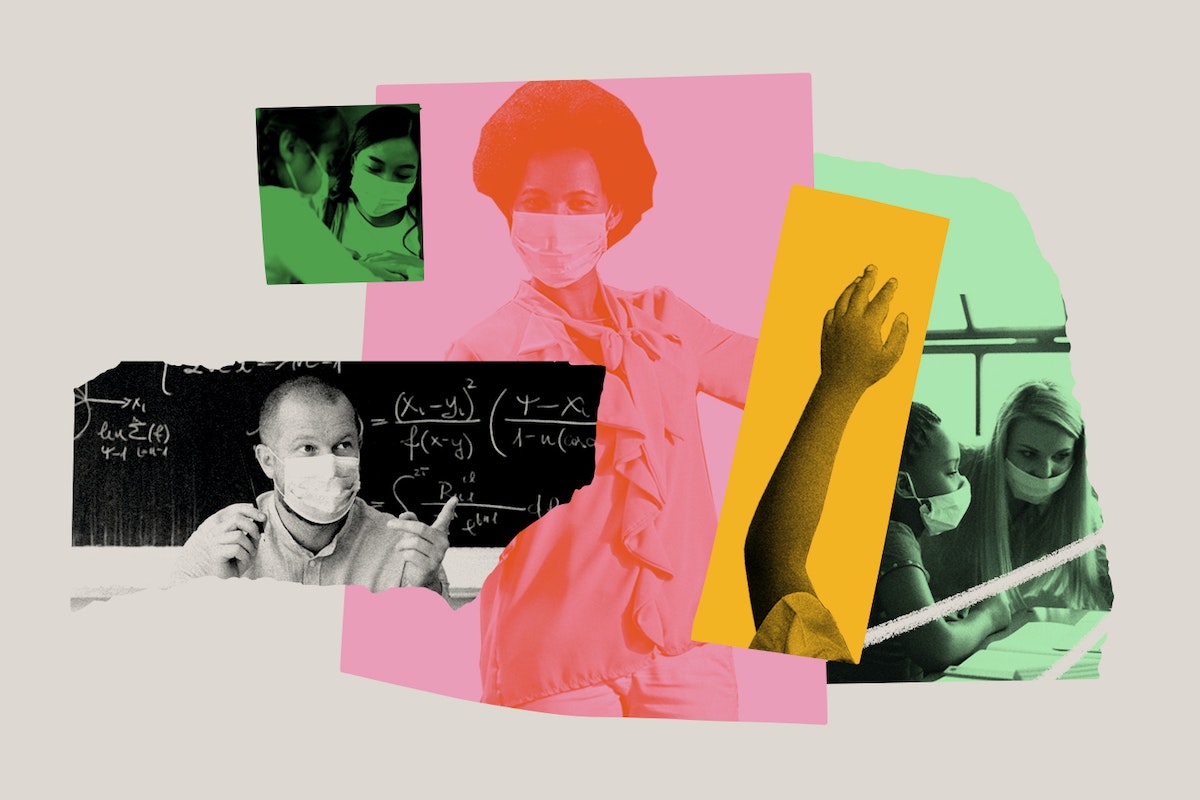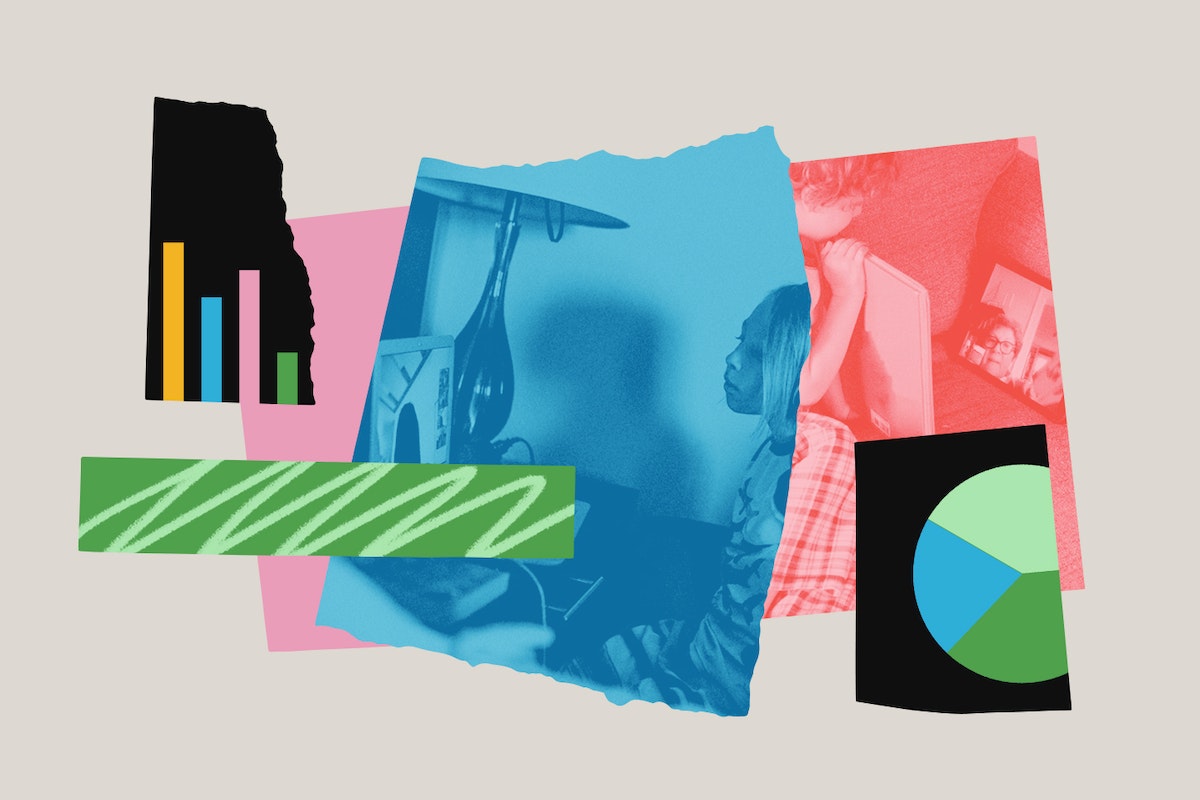Lessons on innovation from teachers

When COVID-19 lockdowns were in full effect, Amanda, then a reading coach in a California school system, was faced with an impossible challenge: figuring out how to get kids, home alone, to log into Zoom for lessons, when no one would be there to make them do it.
“You had to build serious cred with them for them to give a sh*t at all, because there’s no consequence,” she says.
Her solution: Making lessons less about the curriculum, and more about engaging kids in the scary, quickly-evolving events shaping our lives. “I’d show some slides and ask if anyone had heard about [the event] and what their questions were. We’d talk about the facts of the situation,” she shared. “I tried to get them excited about their knowledge of [current events].”
In 2020, America’s students and teachers experienced a full-blown disaster, and teachers were the front-line responders. As they and their students were reduced to rectangles on a screen, they had no choice but to lean into innovation, coming up with solutions like having students create hype videos about their favorite books to encourage classmates to read them, leveraging home kitchens to create lab lessons, and using data to evaluate how their students are doing with learning from afar. Under the worst possible circumstances, they came up with solutions that will improve education for the better, in this moment, and for the future.
IDEO and PowerSchool were so inspired by their work that we partnered to research the way teachers hacked, persisted, and made do to uncover clues to innovation. Last year, we interviewed teachers, administrators, teacher coaches, and education experts to get a close up look at how teachers innovated in 2020 and 2021, and how we as designers and makers might learn from their work.

Breaking down silos in the name of collaboration
When this crisis thrust even first graders out of their classrooms and stuck them in front of computers with varying degrees of Wifi—and supervision—teachers had to throw out the rule book. Both expert and mentor teachers alike were caught on their heels, and their only option was to innovate.
To meet this extraordinary demand for real-time innovation, they turned to one another—peers in their buildings as well as online learning communities. Teachers were no longer experts, they were almost “lead learners”—humbly fostering collaboration with one another and pushing forward to develop an entirely new way of working in real time. "The pandemic has enabled so much more collaboration than before,” explained Christine, an elementary school art teacher in Massachusetts. “I've seen techniques done in new ways, skills taught in ways I never would have thought to teach them. This is an opportunity to see how each other teaches!" What’s more, when even seasoned teachers were getting used to an entirely new context, mentor/mentee relationships began to shift, as everyone had ideas to share with each other. A new teacher manager in a district in California told us that “there were a number of examples where the mentor was certainly a more experienced educator, but not nearly as experienced or fast at learning technology, so there was an exchange of skills.”
Teachers were forced into this situation, but their reaction is one that makers and designers should learn from. You might ask yourself—who is it absolutely nuts that I don’t already work with? Who would you call for help if everything fell apart? It might be a person you think of as a friendly competitor. Or it could be someone whose work context just seemed too different—maybe they are more junior, or work in a non-profit setting. At this point, what humanity really needs is connection with one another. To create it, we must break down the silos we’re keeping up. It’s time to rethink the divisions we have between departments, companies, and even sectors to speed up our collective innovation.

Building tighter learning loops
One of the biggest challenges that teachers faced in experimenting with so many new tools was determining what was actually working. After all, rapid prototyping is only as useful as the learning you can apply to the next prototype. Teachers couldn’t afford to wait until grading periods to analyze how it was all working out.
The remote setting opened up the opportunity to work more closely with individual students one-on-one and to personalize learning experiences and methods to meet their needs. Technology also helped them better understand each student’s progress, enabling them to tailor their instruction the next day. More teachers began leveraging instant feedback tools, even as they faced more variability in student knowledge and skills.
Hannah, a secondary math teacher, dove into new apps and services she started using to track student progress to make instruction more personalized, explaining that rather than going on gut feel, “I can genuinely say I know which kids aren’t making the right progress.” When students and families could see educators iterate on lesson plans each week, and make feedback immediately actionable, everyone was able to take a collective breath and feel the progress. Even if the changes were relatively small, they knew that they were being listened to. Teachers built new processes and improved trust.
Maybe you already do rapid prototyping in your work and have formed tight learning loops. Consider how you might use them as a means of not just learning, but showing your users that you’re learning. Internally, we all could be using technology to do daily micro-check moments with our teams and collaborators, and get even more serious and actionable after receiving real time feedback. Imagine a working world where the last five minutes of every meeting or collaboration were dedicated to asking ourselves how did that go? What could we do better next time?

Maintaining a laser focus on what’s most relevant
In some ways, students had their own form of a “Great Resignation” in 2020. They had previously been held captive in school rooms that weren’t catering to them, and their new at-home context meant teachers had to rethink how they were reaching students. “We’re messing around with our schedule,” explained Evan, a middle school principal. “We’re trying to create more space for more things that we say we value.”
Teachers had been operating under a 180-day school year for decades and have optimized their content to fit standard school hours—maybe you’ve been doing the same with your five day work week. During distance learning, teachers had no idea how much time they would actually get with students on any given day, leading them to simplify their content and get strategic about making every minute count.
In an essay from 2003, Jim Collins, the author of Good to Great, stresses the importance of “subtracting.” “A great piece of art is composed not just of what is in the final piece, but equally important, what is not. It is the discipline to discard what does not fit.” It isn’t just about prioritizing what’s most important; it’s about not holding on to the parts that don’t serve us anymore, even if they have already cost us years of effort. We need to consider how to do more with less, and how to subtract what’s not serving us and those around us.

Be human first
Teachers have always been concerned about their students, but the pandemic brought that concern to a new level. (You, too, might have experienced more personal stories, tears, and vulnerability at work!) We saw teachers get creative about meeting students’ emotional needs—trying things like swapping out detention for meditation, or having a weekly “campfire” in class to circle up and share how everyone was doing. They extended deadlines, accepted late work, and allowed students to retake exams. Teachers brought more of themselves to school, showing up as humans first and foremost and prioritizing care before content.
As Jennie, a high school teacher in Ohio explained, “I just have more grace for everyone. Are you lying to me about homework? Maybe. Do you have a reason to be lying? Maybe. I think it’s made me a better teacher. I’m more compassionate. Life’s hard."
As innovators, we too need to build in flexibility for the fallibility that comes with being human, and find ways to bring more humanness to our leadership. We must find ways to prioritize the health and wellness of the people we work with above everything else.
—
At both of our organizations, and hopefully at yours, teachers are inspiring us to break down arbitrary siloes, cut the fluff, show we’re listening, and be more human. But they’re not the only innovators we should be watching right now. The heroic, hard-working, dynamic first responders of the pandemic—nurses, social workers, librarians, counselors—are also on the front lines of innovation. They are adapting, growing, testing, and changing at a rapid pace in a way that all business leaders could be taking lessons from.
Read the full Teaching in Flux report, authored by Jen Halls, Ridima Ramesh, and Brian Standeford.
Words and art



Subscribe

.svg)









